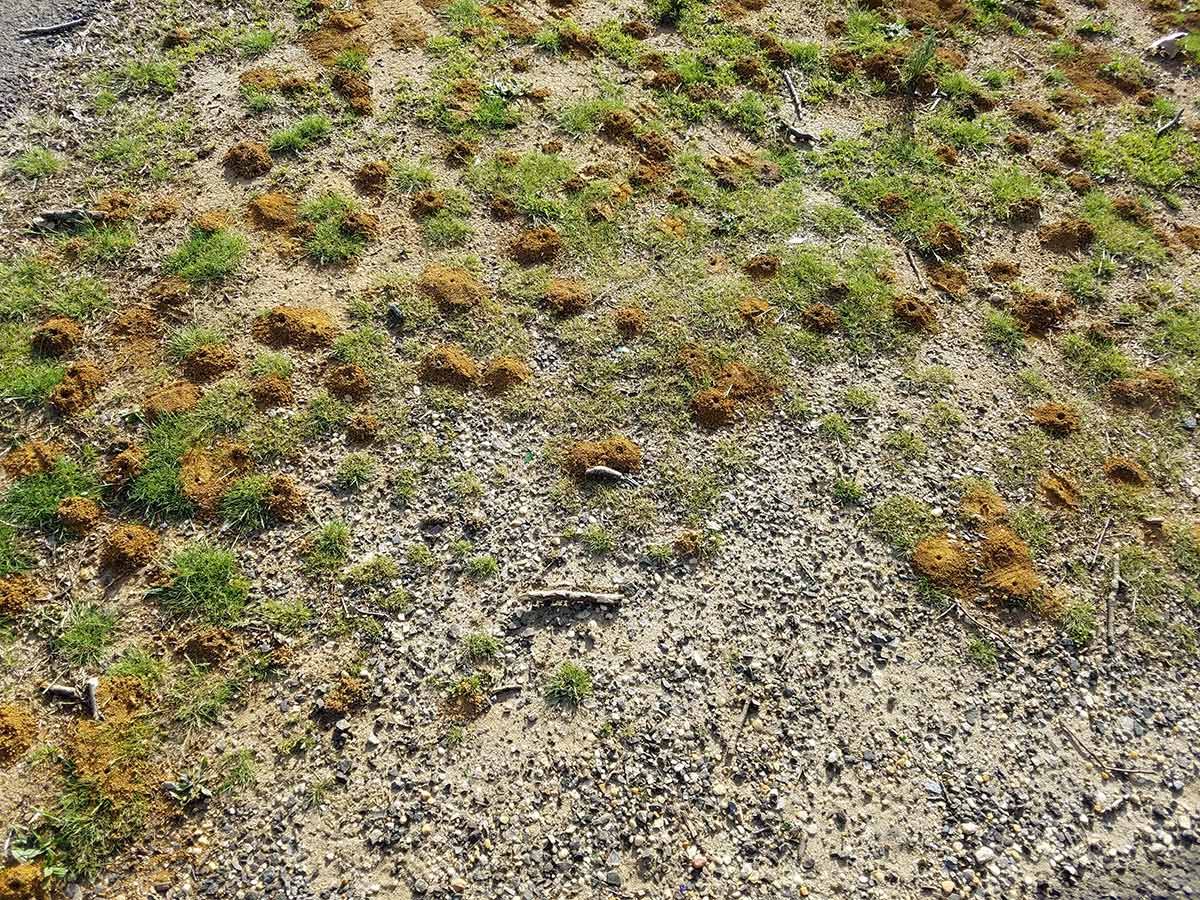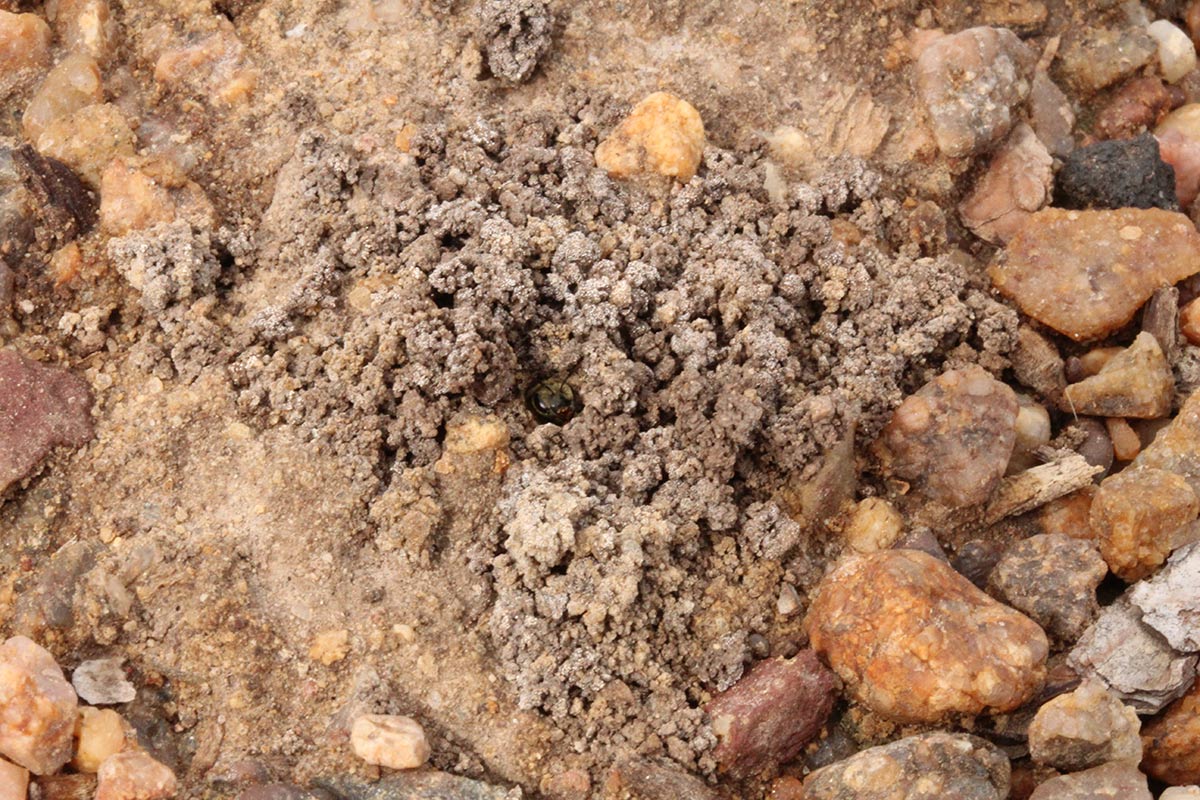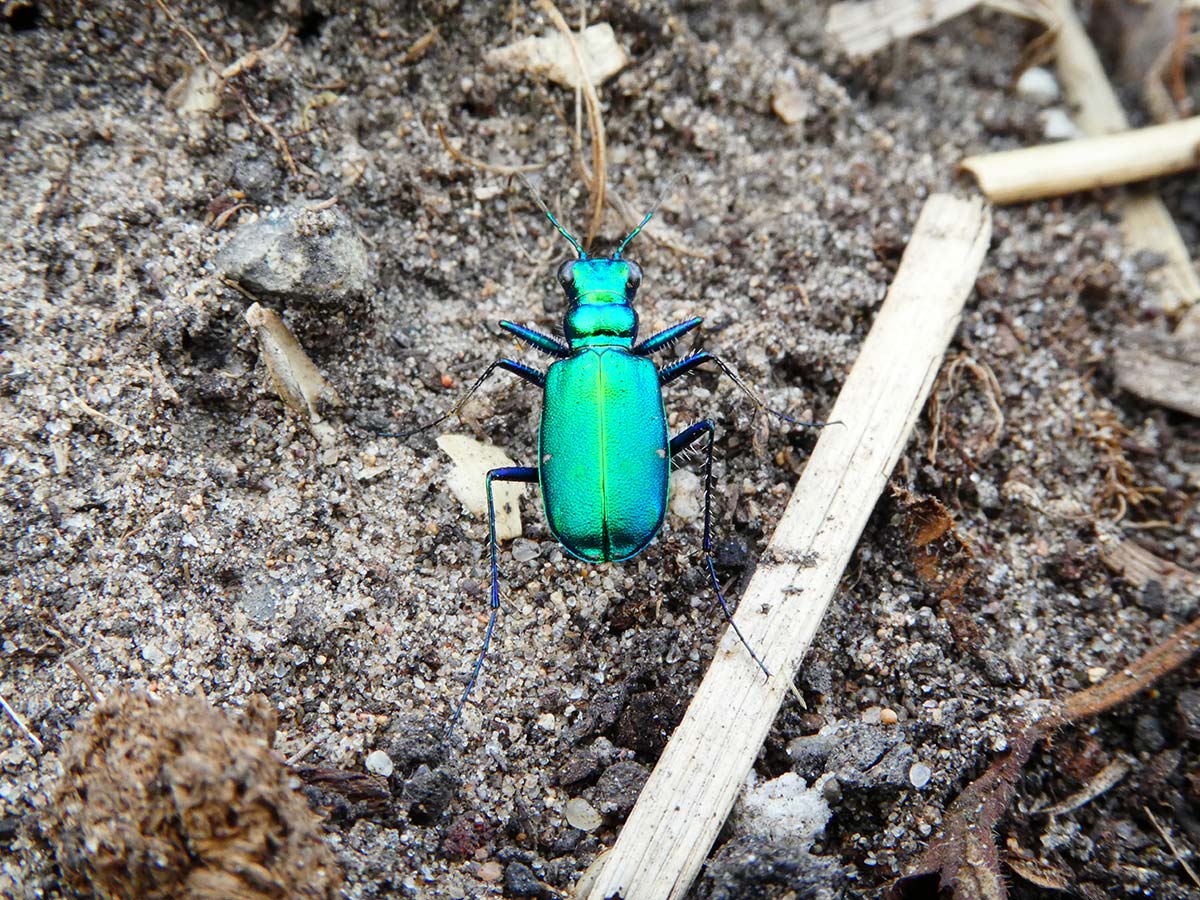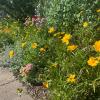When creating a garden or yard that supports pollinators, one instinct might be to fill every patch of ground with as many plants as possible. But doing so would deprive the majority of our native bees of a necessary habitat: bare ground!
Yes, we mean open patches of soil and sand, with few or no plants! Why is this such an important feature to include when building a biodiverse yard? Because that’s where most of our bees live! Around 70% of all of the native bee species in North America nest in the ground. They prefer relatively loose, undisturbed soil, and patches of bare ground without a lot of dense vegetation or coverings such as thick mulch.
Ground-nesting bees include long-horned bees (Melissodes spp.), squash bees (Peponapis spp.), mining bees (Andrena spp.), polyester bees (Colletes spp.), and many sweat bees (Halictus spp.). Many of these bees are among the earliest pollinators to emerge in spring, and are essential pollinators of early-blooming fruit tree crops, as well as spring ephemeral wildflowers and native trees and shrubs.

How to make a useful patch of bare ground
If you’d like to support ground nesting bees in your yard, it’s easy! The first step is to clear away dense vegetation from a sunny, well-drained area. If possible, select a spot on an open, south-facing slope. The sunlight helps the bees warm up and start their day, and keeps the soil from staying muddy after rains.
These bare patches don’t actually need to be completely cleared. Bugs just need to be able to get to the soil easily. Leaving some plants to prevent erosion is a good idea. Try using native flowering plants and grasses or sedges that grow in clumps or bunches. These plants are useful since they grow with a space around the plant where bees can access bare soil.
Once you’ve built your bare ground habitat, don’t turn or till the soil in the area. Bees need the soil to remain stable; baby bees spend up to eleven months of the year underground!

Use loose ground cover instead of traditional mulch
Avoid landscaping with plastic mulch, landscape fabric, and heavy wood chips, especially chemically treated or colored wood chips. Not surprisingly, these impenetrable layers can limit nesting sites for ground nesting bees.
If you would like some cover over open ground areas, consider using a shallow layer of pebbles as rock “mulch”. Bees can still reach small patches of soil, and some even prefer to nest among pebbles over bare ground (such as the orange-legged furrow bee Halictus rubicundus, which is widespread).

Another compromise is to use compost, leaf litter, and plant debris from your wildflower gardens, rather than wood mulch. Compared to wood mulch, a layer of leaf litter or other loose mulch allows ground-nesting bees easier access to their nest entrances.
Wildlife watching at your patch of bare ground
Once you’ve put together this new habitat, keep an eye out for signs that your local pollinators are moving in! Here are some things to look out for:
- Bees digging their nests in spring! Small heaps of soil around a tunnel opening are a good sign that a bee is busy at work.
- Nesting mothers bringing in food for their offspring! Ground-nesting bees will make many trips with pollen, while many ground wasps will be seen carrying back insects since they are carnivorous.
- Tiger beetles roaming in search of food! Many are quite colorful and shiny, and often prefer flat, open areas.

As an extra treat, the nests of ground-nesting bees are an excellent place to practice your bug photography! Whether the bee is out foraging, or inside the nest digging, you can be sure that it will soon pass by the entrance, giving you a better opportunity to set up the shot ahead of time. You can even use these photos to contribute to conservation research! Adding photos to Project Ground-Nesting Bee helps scientists discover how bees decide where to nest based on different types of soil. Of course, you will also get to enjoy seeing these bees amidst the rest of your garden, happily pollinating flowers.
More resources and further reading
- Tiny Places for Tiny Animals: Building the Microhabitats that Bugs Need to Thrive
- Wildlife on the Rocks: Providing the Rocky Habitats Bugs Need for Shelter
- Nesting & Overwintering Habitat for Pollinators & Other Beneficial Insects
- Habitat Planning for Beneficial Insects
- Ground Nesting Bees Community Science Project



